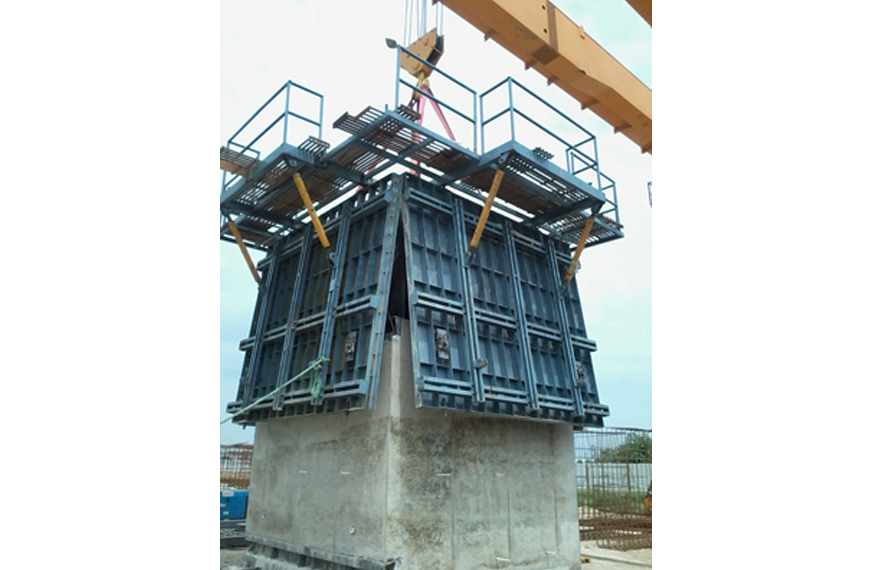FAQ
A box culvert is a type of drainage structure commonly used in construction to allow water to pass beneath roads, railways, or embankments. It is called a "box" culvert because of its rectangular (box-like) shape.
Key Features of a Box Culvert:
- • Shape: Rectangular or square cross-section
- • Material: Usually made of reinforced concrete (precast or cast-in-place).
- • Purpose: Used for drainage, to carry stormwater, streams, or sewage under roads or railways.
- • Structure: Composed of a bottom slab, two vertical side walls, and a top slab (like a box).
A box culvert is a type of structure typically made from reinforced concrete and shaped like a rectangular or square box. It is used to allow the passage of water, people, animals, or vehicles through an embankment or other obstruction.
A box culvert and a pipe culvert serve similar purposes—primarily to allow water to pass under roads, railways, or embankments—but they differ in design, materials, capacity, and applications. Here's a clear comparison:
Shape and Structure:
| Feature | Box Culvert | Pipe Culvert |
| Shape | Rectangular or square box | Circular (or sometimes elliptical) |
| Structure | Monolithic (precast or cast-in-situ) box | Single or multiple circular pipes |
The time to build a box culvert depends on several factors like size, complexity, site conditions, materials, and construction method. But generally, here’s a rough idea:
Summary Table:
| Stage | Estimated Duration |
| Site preparation and excavation | 1 to 3 days (depending on soil and size) |
| Formwork and reinforcement placement | 3 to 7 days |
| Concrete pouring and curing | 7 to 14 days (curing time for concrete strength) |
| Backfilling and compaction | 2 to 4 days |
| Finishing and road/railway reinstatement | 3 to 7 days |
Total approximate duration:
2 to 4 weeks for a standard-sized box culvert (small to medium scale).
Factors that influence construction time:
- • Size and complexity: Larger culverts take longer.
- • Precast vs. cast-in-place: Precast box culverts can be installed faster (sometimes in a few days) since they are fabricated off-site.
- • Weather conditions: Rain or cold can delay curing and excavation.
- • Availability of materials and equipment.
- • Site accessibility and soil conditions.
Common Locations for Box Culverts:
Roadways and Highways- o To allow drainage of stormwater beneath roads without damaging the pavement.
- o Enable watercourses to flow uninterrupted under road embankments.
Railways
- o To let streams or drainage water pass safely beneath railway tracks.
- o Sometimes used as underpasses for maintenance access.
Urban Drainage Systems
- o In cities for stormwater drainage under sidewalks, roads, and parking lots.
- o Helps prevent urban flooding by channeling water efficiently.
Agricultural Lands
- o For irrigation channels to pass under farm roads or pathways.
- o Ensures continuous water flow without disrupting farm operations.
Pedestrian and Animal Crossings
- o Used as underpasses to allow safe crossing of pedestrians, wildlife, or livestock under busy roads.
Parks and Recreational Areas
- o For drainage and to maintain natural water flow beneath walking trails or roads.
Construction Sites
- o Temporary culverts to maintain water flow during construction phases.
Small Waterways and Streams
- o Where small rivers or creeks need to pass beneath embankments, driveways, or other structures.
Yes, box culverts can definitely be used for railway crossings, and they’re actually quite common in that application.
Advantages of Box Culverts
High Load-Bearing Capacity- o Strong reinforced concrete construction can support heavy traffic loads, including highways and railways.
Durability and Longevity
- o Resistant to corrosion, weathering, and wear, leading to a long service life with minimal maintenance.
Versatile Shape and Size
- o Rectangular shape offers ample clearance and hydraulic capacity for water, pedestrians, animals, or utilities.
- o Can be custom-sized to fit specific project needs.
Efficient Hydraulic Performance
- o Smooth interior surfaces reduce friction, allowing better water flow compared to some other culvert types.
- o Ideal for large water volumes and wide flow channels.
Ease of Inspection and Maintenance
- o Box culverts provide a walkable interior space for inspections, cleaning, and repairs.
Adaptability to Different Construction Methods
- o Can be precast off-site and transported for quick installation or cast in place for larger or more complex projects.
Low Risk of Blockage
- o Rectangular shape reduces debris buildup compared to circular pipes.
Structural Stability
- o Suitable for shallow cover conditions where pipes may not be feasible.
Environmental Compatibility
- o Can be designed to accommodate wildlife crossings and maintain natural watercourses.
Yes, box culverts can be extended or modified after their initial construction, but the feasibility and complexity depend on several factors:
Extending or Modifying Box Culverts: Key Points
Extension Possibility- o You can extend a box culvert by adding additional sections either by constructing new box segments adjacent to the existing culvert or by connecting precast sections.
- o Proper structural design is necessary to ensure seamless load transfer and water flow between old and new parts.
Modification Types
- o Widening the culvert to increase flow capacity.
- o Raising the culvert to accommodate higher loads or roadways.
- o Adding additional inlets/outlets for improved drainage.
- o Repairing or reinforcing damaged sections.
Design Considerations
- o The existing culvert’s condition and material compatibility.
- o Hydraulics: ensuring flow continuity and avoiding turbulence or backwater effects.
- o Structural integrity: matching reinforcement and concrete strength.
- o Soil and foundation conditions around the extension.
Challenges
- o Construction work might require temporary traffic or water flow management.
- o Proper sealing/jointing to prevent leakage or structural weakness.
- o Potential disruptions depending on location (roads, railways).

